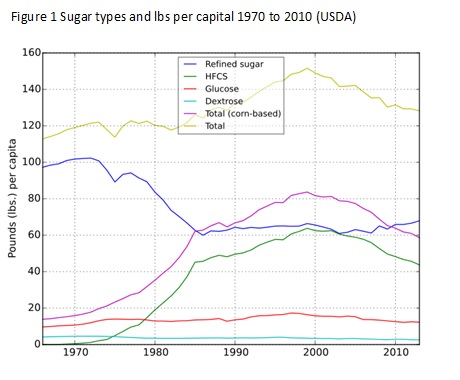News
July 6, 2016
By Nuritas
22 Spoonfuls of Sugar Make the Medicine Go Down – Pt 2

Here is the much-anticipated second installment of our series on sugar by Mr Vincent Monahan. While the first part of this series focused on the evolutionary aspect of our sugar cravings, this installment is focused on sugar’s history, exploring how sugar became a staple in our everyday lives and the implications this is having on our health.
Throughout history sugar’s place in society has evolved from being considered a medicine, to being a luxury commodity for the Western elite and, finally, to modern day ubiquity in our food system, receiving widespread slander due to its link to public health epidemics.
The history of sugarcane is thought to have begun on the island of New Guinea, where sugarcane was domesticated some 10,000 years ago. At that time people simply picked the cane and ate it raw, chewing a stem to get their sugar hit. From there sugar took a winding journey across the globe, spreading to the Asian mainland.
By 500 A.D. sugar was being processed into the more familiar powder form where it was used as a medicine in India for headaches, stomach flutters and impotence. By 600 A.D. the art of sugar processing had spread to Persia, where rulers entertained guests with a plethora of sweets.
As trade route expansion and globalization ensued, sugar eventually became available across the globe, evolving from a commodity only available to the Western elite to its current presence in the everyday diet.
The common table sugar is known as sucrose and is derived from both sugarcane and beet plants. It is composed of equal amounts of glucose and fructose, the latter being the kind of sugar you find naturally in fruit. As globalization and intensive agriculture progressed, sugarcane and beet-derived sugar became readily available from around the beginning of the 20th century. From the 1950s another crop brought about the mass availability of sugar in the form of fructose, corn.
In the United States during the 1970s, corn production expanded partly due to the political popularity of the US president Richard Nixon. Under public pressure to control rising food prices Nixon appointed an agricultural expert Earl Butz to find a solution to growing food demands, and indeed the soaring food prices. Butz’s introduction of industrial agricultural principles drove production efficiency and crop production exploded, corn was one of the key focus crops to experience this growth.
This efficiency boost led to a corn surplus by the mid-70s. In search of an economic use of this surplus, Butz flew to Japan to look into a scientific innovation that would change everything: the mass development of high fructose corn syrup (HFCS). HFCS is a mix of fructose and glucose, that is found in soft drinks at 55 percent and 45 percent, respectively.

Figure 1 demonstrates the intrinsic role played by HFCS of the modern day food industry from the 1970s onward (USDA), entering everything from pizzas, canned fruits and fizzy drinks to providing that “just baked” sheen on bread and cakes, made everything sweeter, and extended shelf life from days to years.
The elevated levels of sugar availability and consumption satisfied the evolutionary sugar cravings (as discussed in Pt 1) and brought new means of food preservation, however, it also brought a wave of public health concerns.
A remarkable correlation between the increase in deaths from diabetes between 1900 and 1920 and the increase in sugar consumption was first publicly highlighted by Professor Haven Emerson, the first director of the Institute of Public Health in the United States. From this point the defamation of sugar had begun, leading to a plethora of public initiatives to drive down over-consumption and increase awareness of the associated health implications.
Today we see a considerable and growing body of research linking sugar over-consumption to the development of obesity, heavily associated with diabetes and cardiovascular disease. For example, the relationship between the consumption of sugar-sweetened beverages and body weight has been examined in many cross-sectional and longitudinal studies showing a strong association between intake of sugar sweetened beverages and body weight (Malik, 2006) (Vartanian, 2007).
A study published in JAMA: Internal Medicine found that “those who got 17 to 21 percent of calories from added sugar had a 38 percent higher risk of dying from cardiovascular disease compared to those who consumed 8 percent of their calories from added sugar” (Yang, 2014). Startlingly this study revealed that the risk of cardiovascular disease was more than double for those who consumed 21 percent or more of their calories from added sugar.
At the governmental level taxation has been proposed as a means of curbing the intake of sugar-sweetened beverages thereby lowering healthcare costs and also generating a means of revenue for government health programs. The public health concerns and the demand for healthier products is being met by a very positive movement in the modern food industry. Traditional consumer goods food companies are also moving the product development focus from solely taste, smell and texture to focusing resources on the scientific aspects of food to develop food based health solutions.
This new and evolving frontier for the modern food industry will be explored in the next blog post of this series
References
Malik. (2006). Intake of sugar-sweetened beverages and weight gain: a systematic review. Am J Clin Nutr., 274-88.
Vartanian. (2007 ). Effects of soft drink consumption on nutrition and health: a systematic review and meta-analysis. Am J Public Health., 667-75.
Yang. (2014). Added Sugar Intake and Cardiovascular Diseases Mortality Among US Adults. JAMA Intern Med., 174(4), 516-524. doi:10.1001/jamainternmed.2013.13563.





 Previous
Previous
